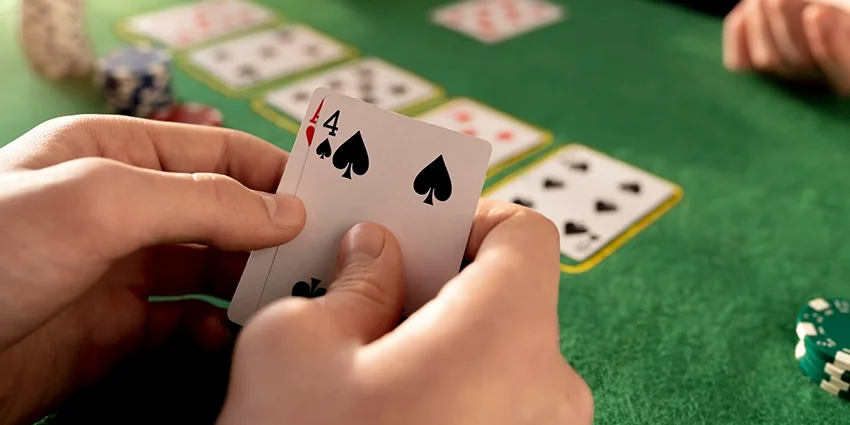The Importance of Using a Perfect Blackjack Strategy
Blackjack has one of the lowest house edges of any casino game, ranging from 0.36% to about 0.5%. To ensure you play within the realm of this small edge, you’ll need to develop a solid Blackjack strategy that will help you make the right choices.
There are several elements of Blackjack strategy covered in this article. First up are some notes on the different rules that pertain to the variation of the game you are playing, including the main things to look out for. You’ll also find a walk-through of a hand, highlighting the key strategies to consider at each step of the game.
Knowing the Rules
There are a ton of Blackjack variations nowadays and subtle differences in the rules can have an impact on how you make ‘good’ plays. The main divergence in rules is between US variations, where the dealer ‘peeks’ to check for Blackjack before the player acts, and European versions, where the dealer only takes their 2nd (and extra) card after the player has acted. In the US version, you already know that the dealer does not have blackjack when you act, meaning you can hit, stand and double differently.
Other rules involve how many times you can split and re-split hands, and whether you can double on any score or whether you must wait for a 9, 10 or 11. You should also check whether there is a ‘surrender’ option, which is often considered the ‘least bad’ option in certain situations and involves giving up a hand for the return of half of your stake.
Walking Through a Hand
The following example uses the most common rules employed in American Blackjack, which involves liberal splitting and doubling criteria, and no surrender option.
After placing their bets, players are dealt two cards face up while the dealer gets one card face up and one face down. If the dealer shows a 10 or an Ace, they will check for Blackjack before any action is taken. If the dealer has Blackjack, any player who does not also have Blackjack loses their bet. If both the player and the dealer have Blackjack, the game results in a ‘push’ – also known as a tie.
When the dealer shows an Ace, players can make an optional bet of half of their original bet on the ‘Insurance’ square. If the dealer shows Blackjack, this move will result in a payout of 2:1, effectively matching the initial stake and ‘saving’ the player. In terms of insurance strategy, it’s always best to decline this bet. It has a massive 12.5% house edge and over time results in money wasted, regardless of whether it saves you on any one occasion.
Assuming the dealer does not have 21, you’ll be asked to make some decisions. Whether you take another card (‘hit’), stay with your current total (‘stand’), add another bet and only receive one more card (‘double down’), or split your cards of the same value into two separate hands will all depend on your score, as well as the card the dealer is showing.
Many decisions are simple. For example, you should always stand on a hard 17 or higher and always take extra cards for totals of 11 or lower. When the dealer shows a 10 or an Ace, your decisions are even easier to make, with hand totals of 12 and 13 becoming ‘hit’ hands and the splitting smaller pairs becoming too dangerous.
Some of the interesting decisions come when the dealer shows a 5 or 6. They are likely to bust those hands (40% of the time or more) so the correct strategy becomes more cautious.
Many land-based and online casinos will allow players to use strategy cards so they can avoid beginner mistakes. It’s recommended that you find one for the variation you are playing and follow the moves it outlines until you are familiar with the game.
When to Double Down and Split
Doubling increases the stakes and magnifies both your potential wins and losses. Some games let you double on any total (though doing this when there’s a chance you could bust with the next card is ill-advised), while other games restrict you to doubling down on card values of 9 through 11 only.
The dealer’s up-card greatly affects your decision to double. If the dealer shows a 4 through 6, you have the added assurance that they will be more likely to bust. This information can help you out in times when you hit a bad hand. At the end of the day, it’s wiser for you to double down only on the best hands if the dealer shows a favorable up-card.
When it comes to splitting, you can only really do this when you have any two cards of the same rank. Some game variations do require that the cards be ‘true’ pairs (any two picture cards), as opposed to simply being of the same value. The card that the dealer shows greatly affects how many times you should be comfortable splitting. For example, against a 5 you know there’s a chance that the dealer could bust, making multiple splits more profitable.
Many Blackjack games offer side bet options with some potentially big payouts. A wise strategy would be to decline these side bets as they carry huge house edges (often 7% or more).
Play blackjack online today at Bovada Casino.
